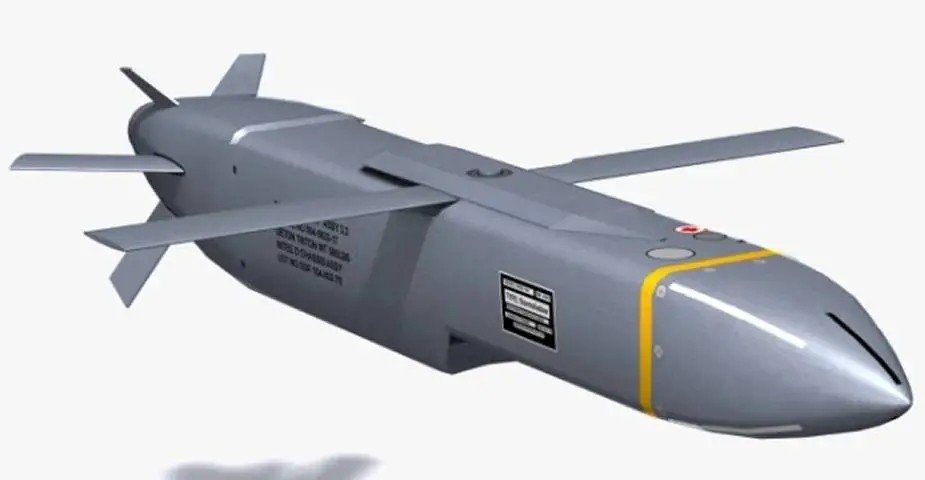
DEFEA 2023: MBDA to conduct mid-life refurbishment of SCALP missiles for Hellenic Air Force
MBDA strengthens its close relationship with Greece with a contract for mid-life refurbishment (MLR) of the SCALP missiles of the Hellenic Air Force, signed on May 11, 2023, by Admiral Aristeidis Alexopoulos, General Director for Defence Investments and Armaments of the Greek Ministry of National Defence, and Eric Béranger, CEO of MBDA.
 This MLR contract is dedicated to the SCALP missiles of the Hellenic Air Force (HAF) and includes the procurement of mission planning products, maintenance and technical assistance. This will prolong the operational superiority of the weapon against future threats.
This MLR contract is dedicated to the SCALP missiles of the Hellenic Air Force (HAF) and includes the procurement of mission planning products, maintenance and technical assistance. This will prolong the operational superiority of the weapon against future threats.
Eric Béranger, CEO of MBDA, stated: “The signing of this contract has a particular meaning for MBDA, coming 55 years after we signed our first-ever Exocet contract with Greece. Our commitment since then never faltered and we are very honored by this additional expression of trust from the Hellenic Air Forces towards MBDA for the mid-life refurbishment of these SCALP missiles. This is again reinforcing our commitment to continue to deliver key sovereign capabilities that provide the best solutions to meet the requirements of the Hellenic Armed Forces customer.”
The SCALP missile currently equips the Hellenic Air Force’s Mirage 2000-5 and Rafale fighter aircraft. The missiles concerned by this mid-life refurbishment were ordered as part of the original weapon package for the Mirage 2000-5. Further SCALP missiles were ordered by Greece as part of the weapon packages for the 18 Rafale ordered in 2021 and the additional six Rafale ordered in 2022.
The SCALP (Système de Croisière Autonome à Longue Portée) missile, also known as Storm Shadow in the United Kingdom, is a long-range, air-launched cruise missile designed for precision strikes against high-value targets. Developed jointly by France and the United Kingdom, the SCALP missile represents a significant advancement in military technology and provides a powerful capability for modern warfare.
The SCALP missile is primarily designed to be launched from aircraft, including bombers and fighter jets, enabling it to be employed in a variety of combat scenarios. With a range of over 250 miles (400 kilometers), the missile is capable of reaching its target while evading hostile air defenses, thanks to its low observability and terrain-following capability. This makes it an effective weapon for engaging heavily defended targets deep within enemy territory.
One of the key features of the SCALP missile is its precision guidance system. It employs a combination of inertial navigation, terrain reference navigation, and GPS to accurately navigate to its target. Additionally, it is equipped with an advanced imaging infrared seeker that provides real-time target recognition and tracking capabilities, allowing it to strike with pinpoint accuracy. This makes the SCALP missile particularly effective against infrastructure targets, such as command centers, communication facilities, and hardened bunkers.
The SCALP missile carries a high-explosive warhead, which can cause significant damage upon impact. Its warhead is designed to penetrate fortified structures before detonating, maximizing the destruction inflicted on the target. The missile’s stealthy design, combined with its ability to fly at low altitudes, reduces its radar signature and enhances its survivability during the mission.
Furthermore, the SCALP missile incorporates advanced mission planning and control systems, enabling operators to program the missile with specific mission parameters and target coordinates. This flexibility allows for adaptive mission execution and the ability to engage time-sensitive targets.
The SCALP missile has been successfully utilized in various conflicts, demonstrating its effectiveness and reliability. It has seen combat deployment in operations such as the Gulf War, the Kosovo War, and more recently, in conflicts in the Middle East. Its ability to strike targets accurately from stand-off distances has made it a valuable asset for military forces seeking to minimize risks to their aircraft and personnel.


